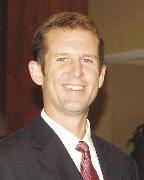Like every other sector of commercial real estate, the hotel industry took a beating in 2009. Record drops in year over year revenue per available room (RevPar) reached an all-time high -in excess of 16%- by the end of the year. The local New England market did not fare any better than the national average. Fortunately, as Smith Travel Research (STR) reported last week, the worst may be behind us.
"New England reported the largest increases in occupancy and revenue per available room for April, according to data from STR. The region's occupancy rose 11.6% to 56% and RevPar was up 12.7% to US $60.98. Overall for the month, the industry's occupancy was up 4.7% to 58.4%, average daily rate dropped 1.2% to US $97.72, and RevPar increased 3.5% to US $57.06."
These positive numbers may indicate the beginning of a turnaround, but the problems caused by the dramatic drop in demand that began in 2008 and continued through 2009 still haunts the hospitality industry. Due to the high fixed costs of hotels, Net Operating Income (NOI) typically drops about twice the decrease in RevPar. For example, in 2009, when RevPar decreased roughly 17%, hotel owners saw their NOI decease 34% when compared to 2008. Obviously, removal of 34% of an owner's income leads to other problems.
Based on the current situation, what happens next? To date, lenders are choosing to negotiate with borrowers and modify existing loans rather than foreclosing. This practice, known as "extend and pretend" is one of the reasons hotel investors are finding it difficult to find assets to purchase. The flood of hotels that many predicated would be available for sale directly from lenders never materialized. Moving forward, it will be interesting to see what position lenders take if market conditions do not improve enough for hotel owners to meet their modified loan terms.
Returning recently from the "Meet the Money" hotel conference in Los Angeles, it was not difficult to gauge where industry experts feel the market is headed. Although the numbers are getting better, the problems are numerous and widespread. Hotel loan defaults are accelerating faster than lenders and servicers can handle. Their capacity to deal with each loan productively leaves the borrower in a difficult position. For example, what are the chances the person you made your loan with in 2007 is still employed by the lender? If your loan was sent to a special servicer, what does that mean, what is the process and what is your course of action? The advice, contact groups with experience dealing with lenders right now, do not wait and "hope" for conditions to improve. Unfortunately, an increase in room demand is not going to solve the problems.
In addition to the widespread challenges, public real estate investment trusts (REITs) and private equity firms successfully raised millions of dollars in the last few years and are gearing up to purchase hotels. Even though debt financing is difficult to find, there are plenty of all cash buyers "sitting on the sidelines" with their "powder dry" ready to strike. Given this scenario, the question now becomes: How are investors underwriting hotels in today's market? Due to the historic drop in NOI, other factors are of a part of the dynamics, including the "price per pound", or the price one is willing to pay today versus what the hotel would cost to build in today's market.
To get a better read on what is happening in New England, I asked Jim O'Connell, the president of O'Connell Hospitality Advisors, an expert in hotel valuation and hotel brokerage.
"We are aggressively pricing quality assets as the private equity is starved for good product. Midmarket/suburban full service properties from $10 million to $35 million are difficult due to the lack of financing. As performance improves, we expect the debt to trickle down to this sector and cap rates will fall," said Jim.
Unfortunately for buyers, the market drove values so low, that sellers are unwilling to sell unless they are forced or highly motivated by other personal economic reasons.
STR's April numbers provide temporary relief from the pain owners started experiencing nearly two years ago. As owner/operators ourselves, we hope the worst is behind us, although we are only two years into a recovery that many say will take until 2016 or 2017. If that is the case, make sure your team is not only poised for survival, but also built to provide solutions to the complex challenges owners, operators and lenders will continue to face
for the foreseeable future.
David Roedel is a partner with Roedel Companie, LLC, Wilton, N.H.
Tags:
Positive numbers lift hotel spirits! What lies ahead for the hospitality industry?
May 26, 2010 - Spotlights









